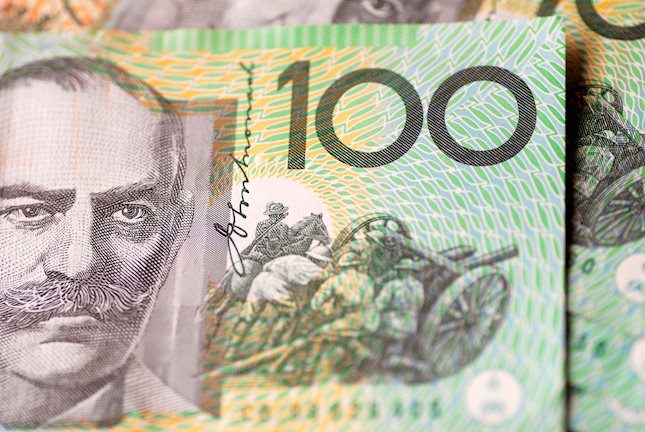- The Pound Sterling rises to 1.2550 inspired by strong UK Q1 GDP data.
- The UK economy expanded by 0.6%, moving out of the recession seen in the second half of 2023.
- Investors await UK employment and US inflation data for fresh guidance.
The Pound Sterling (GBP) remains well-supported above the psychological support of 1.2500 against the US Dollar (USD) in Monday’s New York session. The GBP/USD pair holds firmly as the US Dollar fails to recover losses driven by higher-than-expected Initial Jobless Claims for the week ending May 3, which raised concerns over the health of the United States labor market.
The confidence of financial markets for the US Federal Reserve (Fed) to start lowering interest rates from the September meeting has increased as US labor market conditions have cooled down. For now, investors shift their focus to the US Consumer Price Index (CPI) data for April, which will be published on Wednesday.
Annual headline CPI is forecasted to have softened to 3.4% from 3.5% in March. In the same period, the core inflation, which strips off volatile food and energy prices, is anticipated to have decelerated to 3.6% from the prior reading of 3.8%. Economists expect that the monthly headline and core CPI have grown at a slower pace of 0.3% from the prior reading of 0.4%.
Daily digest market movers: Pound Sterling extends its upside as US Dollar slumps
- The Pound Sterling holds strength inspired by the robust UK Q1 Gross Domestic Product (GDP) data released on Friday. The United Kingdom Office for National Statistics (ONS) reported that the economy expanded at a stronger pace of 0.6%, beating estimates of 0.4%. This led to an end to the technical recession registered in the second half of 2023.
- After the GDP data, UK Chancellor Jeremy Hunt said: "There is no doubt it has been a difficult few years, but today's growth figures are proof that the economy is returning to full health for the first time since the pandemic," Reuters reported.
- After strong UK growth data, the strength of the UK economy will now be tested on the grounds of labor market data, which will be published on Tuesday. Economists expect that the ILO Unemployment Rate for the three months ending March rose to 4.3% from the prior reading of 4.2%. Apart from the jobless rate, investors will keenly on the Average Earnings data that has been fuelling service inflation, which is almost double that of what should be consistent to bring inflation down to the 2% target.
- Annual Average Earnings Including Bonuses are estimated to have slowed to 5.3% in the three months ending March from the prior reading of 5.6%. A sharp decline in the wage growth momentum would boost expectations for the BoE to begin reducing interest rates in June.
- Last week, the BoE kept interest rates steady at 5.25% for the sixth time in a row. Overall, the BoE's communication indicated that it is swiftly leaning toward policy normalization. BoE Deputy Governor Dave Ramsden joined policymaker Swati Dhingra and voted for a rate cut by 25 basis points (bps) to 5.0%. In the press conference, BoE Governor Andrew Bailey said the central bank could deliver more rate cuts than investors have anticipated.
Technical Analysis: Pound Sterling exhibits strength above 1.2500
The Pound Sterling advances to 1.2540 on Monday due to multiple tailwinds. The GBP/USD pair recovered sharply from 50% Fibonacci retracement (plotted from April 22 low of 1.2299 to May 3 high of 1.2634) near 1.2470. The Cable remains sticky to the 20-day Exponential Moving Average (EMA), which trades around 1.2520, suggesting a sideways trend.
The pair is still below the neckline of the Head and Shoulder (H&S) chart pattern formed on a daily timeframe. On April 12, the Cable fell sharply after breaking below the neckline of the H&S pattern plotted from December 8 low around 1.2500.
The 14-period Relative Strength Index (RSI) oscillates in the 40.00-60.00 range, suggesting indecisiveness among market participants.
BoE FAQs
The Bank of England (BoE) decides monetary policy for the United Kingdom. Its primary goal is to achieve ‘price stability’, or a steady inflation rate of 2%. Its tool for achieving this is via the adjustment of base lending rates. The BoE sets the rate at which it lends to commercial banks and banks lend to each other, determining the level of interest rates in the economy overall. This also impacts the value of the Pound Sterling (GBP).
When inflation is above the Bank of England’s target it responds by raising interest rates, making it more expensive for people and businesses to access credit. This is positive for the Pound Sterling because higher interest rates make the UK a more attractive place for global investors to park their money. When inflation falls below target, it is a sign economic growth is slowing, and the BoE will consider lowering interest rates to cheapen credit in the hope businesses will borrow to invest in growth-generating projects – a negative for the Pound Sterling.
In extreme situations, the Bank of England can enact a policy called Quantitative Easing (QE). QE is the process by which the BoE substantially increases the flow of credit in a stuck financial system. QE is a last resort policy when lowering interest rates will not achieve the necessary result. The process of QE involves the BoE printing money to buy assets – usually government or AAA-rated corporate bonds – from banks and other financial institutions. QE usually results in a weaker Pound Sterling.
Quantitative tightening (QT) is the reverse of QE, enacted when the economy is strengthening and inflation starts rising. Whilst in QE the Bank of England (BoE) purchases government and corporate bonds from financial institutions to encourage them to lend; in QT, the BoE stops buying more bonds, and stops reinvesting the principal maturing on the bonds it already holds. It is usually positive for the Pound Sterling.
Information on these pages contains forward-looking statements that involve risks and uncertainties. Markets and instruments profiled on this page are for informational purposes only and should not in any way come across as a recommendation to buy or sell in these assets. You should do your own thorough research before making any investment decisions. FXStreet does not in any way guarantee that this information is free from mistakes, errors, or material misstatements. It also does not guarantee that this information is of a timely nature. Investing in Open Markets involves a great deal of risk, including the loss of all or a portion of your investment, as well as emotional distress. All risks, losses and costs associated with investing, including total loss of principal, are your responsibility. The views and opinions expressed in this article are those of the authors and do not necessarily reflect the official policy or position of FXStreet nor its advertisers. The author will not be held responsible for information that is found at the end of links posted on this page.
If not otherwise explicitly mentioned in the body of the article, at the time of writing, the author has no position in any stock mentioned in this article and no business relationship with any company mentioned. The author has not received compensation for writing this article, other than from FXStreet.
FXStreet and the author do not provide personalized recommendations. The author makes no representations as to the accuracy, completeness, or suitability of this information. FXStreet and the author will not be liable for any errors, omissions or any losses, injuries or damages arising from this information and its display or use. Errors and omissions excepted.
The author and FXStreet are not registered investment advisors and nothing in this article is intended to be investment advice.
Recommended content
Editors’ Picks

AUD/USD keeps the red near 0.6200 after Chinese inflation data
AUD/USD keeps losses near the 0.6200 mark following mixed Australian data and as expected China's inflation numbers. The RBA's dovish shift and China's economic woes add to the weight on the Aussie as risk sentiment remains tepid. Fedspeak eyed.

USD/JPY: Bears attack 158.00 on strong Japanese wage growth data
USD/JPY drifts lower to test 158.00 early Thursday after data showed that base salaries for Japanese workers increased at the fastest pace in 32 years. The data backs the case for the BoJ to raise interest rates, which, along with the cautious market mood, benefits the safe-haven Yen and drags the pair away from a multi-month top.

Gold price retreats toward $2,650 despite risk aversion
Gold price is retreating from near a monthly high of $2,670 in Thursday's Asian trading. Resurgent haven demand for the US Dollar amid risk aversion weigh on Gold price even as US Treausry bond yields extend pullback. Focus shifts to Fedspeak amid holiday-thinned trading.

Has Bitcoin topped for the cycle? Here's what key metrics suggest
Bitcoin experienced a 2% decline on Wednesday as the cryptocurrency market grapples with recent losses. On-chain data has indicated a shift in the accumulation of the leading cryptocurrency, suggesting that holders are increasingly selling their assets.

Bitcoin edges below $96,000, wiping over leveraged traders
Bitcoin's price continues to edge lower, trading below the $96,000 level on Wednesday after declining more than 5% the previous day. The recent price decline has triggered a wave of liquidations across the crypto market, resulting in $694.11 million in total liquidations in the last 24 hours.

Best Forex Brokers with Low Spreads
VERIFIED Low spreads are crucial for reducing trading costs. Explore top Forex brokers offering competitive spreads and high leverage. Compare options for EUR/USD, GBP/USD, USD/JPY, and Gold.
